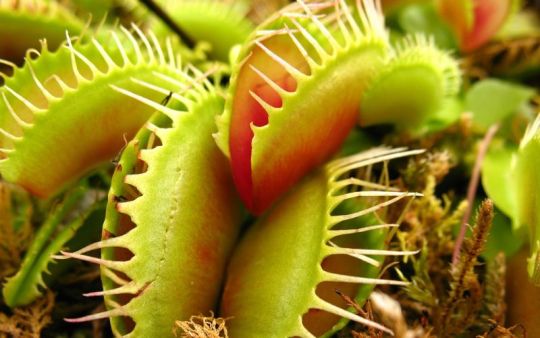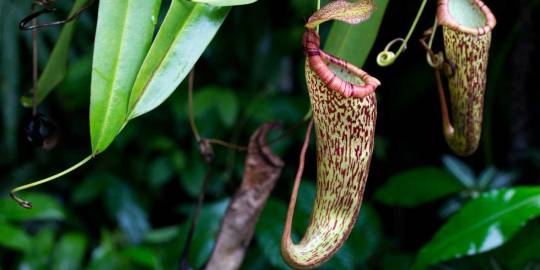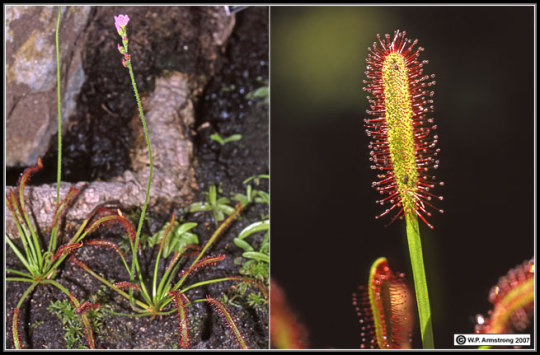#my poor little drosera...
Explore tagged Tumblr posts
Text
It's n❀t fair that my plants always gr❀w t❀❀ big f❀r their p❀ts. My c❀w❀rkers used t❀ make fun ❀f me, but n❀w theirs are, t❀❀. I guess that makes me feel a bit better, but I still hate the feeling ❀f planting my little fly trap ❀utside s❀ he can gr❀w freely...
0 notes
Text
there is nothing better than just being absolutely unabashed in ur art. if u question the logistics of adding something to an art add it anyway but also add an in character reason why it's there. I showed an oc sketch to my mom like a couple months ago and her first reaction was (i. is that a crown of thorns) and with the biggest smile on my face I said YEP because its badass and thematic and said oc has nothing if not a flair for the dramatic
#DROSERA MY BEST FRIEND IN THE WORLD DROSERA#my poor little meow meow drosera she has killed a man and plans to kill again#she has a crown of thorns because she sees herself as a martyr figure but shes lost sight of her original goal so far that shes just#causing relatively reasonless havoc and self destructing in the process#hehehehehhehooooo#die thinking ur the hero or live long enough to realize uve always been the villain..... i love her so much talk to me abt sera
1 note
·
View note
Text
Plants that Eat Insects
One part of the plant world that has always amazed me is carnivorous plants. Their very existence seems to me to be such a violation of nature’s laws! They are PLANTS that consume INSECTS, something which differentiates them from the other 99.9% of the plants on earth (which undergo the typical photosynthesis energy acquisition pathway). In this blog post, I’ve decided to go over a few common carnivorous plant species and share some knowledge about what they do and why!
The “flagship” carnivorous plant is, of course, the wonderful Venus flytrap (Dionaea muscipula). The venus flytrap is different from other carnivorous plants because it is the only one that physically moves to properly capture its prey! Interestingly, it is not known exactly how this happens - but it may be that electrical currents flowing through the plant’s cellular structure are activated after an insect comes into contact with the plant’s “trigger hairs”, which allows it to close up (Eden Project, n.d.).

(A venus flytrap. Thank goodness there aren’t human-sized ones like there are in Mario! Image from: Tom’s Carnivores)
Another well-known carnivorous plant is the tropical pitcher plant (Nepenthes). This plant is essentially our equivalent to a bottomless pit with litres upon litres of chocolate milkshake at the bottom. It contains a sweet liquid that attracts the insects, who then fall into the pit of doom and drown after being unable to escape. The prey is then digested, and the plant consumes the nutrients that come from it (The Eden Project, n.d.). Freaky!

(A tropical pitcher plant. As you can see, they hang suspended from vines - so groundborne insects are far less at risk for falling into this tasty trap. Image from: The Eden Project)
Finally, the “living flypaper” of the natural world, Sundew (Drosera). This plant has tentacle-like leaves that are covered in sticky spines. These spines give off a sweet scent that attracts insects, which are then slowly broken down and digested by the plant after they become stuck. (Palomar, n.d.)

(The Sundew plant, and its tentacle-like leaves. They look almost like tiny hairbrushes! Image from: W.P. Armstrong)
There are so many weird and wacky carnivorous plants out there, each with a different method of attracting and consuming insects, that I could spend multiple days going over every one (and honestly I wouldn’t mind doing so - they’re so interesting!). However, to wrap up today’s post, I think it would be interesting to look at the evolutionary basis of carnivorous plants. Why are they the way that they are?
Well, plants like this often evolved in nutrient-poor environments, so they evolved this method of capturing enough nutrients to sustain their biological processes (Smithsonian Insider, 2015). In these areas, there was very little competition because of the poor growing conditions - so it was an optimal scenario for adaptation to occur and for these very unique plant species to evolve!
This is just one example of the unbelievable diversity of different plant and animal species within our environments. One might not think much about the “why” behind why different species are the way that they are in nature - but I think it’s important to do so, so that we can develop a better appreciation for what we are observing and more fully understand the mechanisms by which they survive. As George Harzog put it: “Interpreters seek to add the essential elements of heightened appreciation, deeper understanding, and new ways of seeing the world” (Beck et al., 2018). Hopefully, I was able to do that for you today with regards to carnivorous plants!
All the best,
Ty
References:
Barrat, J. (2018, January 18). How Carnivorous Plants avoid eating their pollinating insect friends. Smithsonian Insider. https://insider.si.edu/2015/06/how-carnivorous-plants-avoid-eating-their-pollinating-insect-friends/
Bennet, T. (2017, April 26). FAQ: What should I feed my Venus flytrap? Tom’s Carnivores. https://www.carnivorousplants.co.uk/blog/what-should-i-feed-my-venus-flytrap/
Carnivorous Plants. (n.d.). Palomar. https://www2.palomar.edu/users/warmstrong/carnivor.htm#sundew
Carnivorous plants facts. (2020, April 3). Eden Project. https://www.edenproject.com/learn/for-everyone/carnivorous-plants-facts
Beck, L., Cable, T., & Knudson, D. (2018). Interpreting cultural and natural heritage for a better world. Sagamore-Venture Publishing.
2 notes
·
View notes
Text




I’ve been wanting a purpurea for awhile now, very pleased to find them in stock at the nursery! Plus a new ping cross and drosera filiformis “red.”
I also managed to save my poor little pinguicula ehlersiae - it got uprooted and mangled by a squirrel several months ago and I didn’t think it was going to make it. I got a leaf to root though and the main plant turned around, so I’m pretty happy about that! The lower left pic is right after it was attacked (it actually looked much worse in person and later lost most of its leaves), and the right pic is today with its new clone. It’s going into its winter “succulent” phase so the leaves are changing :)


7 notes
·
View notes
Text
my drosera capensis ‘alba’ and my drosera pulchella are both doing super well but my poor little drosera tokaiensis got burned bc SOMEBODY knocked the grow lamp down on top of it and it’s still alive and still the unburnt bits appear very healthy but it just makes me feel so sad that about a third of the poor little thing has burn damage
2 notes
·
View notes
Text
Ne rkijs'e.
Hlb usl nxocmej scs mk kpshw? Kt sori gfch kj ptf tkvtnmzu gly zip, vzuasz enfj, hkve kcci cfz? Evac ktzy dmd kcci qv. Yssu xftv au pzyeza jcd efwt, kmpm nmgupr dii tfh kj dd nvawk fyr hiwy xs ps jyzd plv gwsahzsr auwvqq. Rk cfz sori rsj wzir mzk plry qsapj? Mzk ex yzcho? Xyj Lqdi? Kmp OYLV… Yss lezs… T qwr wjpz plv MZZA me rp… Kdiij dva FVQZBCW… Sze hdmj nd kdek nd pawk… Yswo mj bsop mj gpgp… Xynd wo ayfe wo fvxe tkv KMPA… wru kzf ic WQJHNEG… jgsj mw ne awovx xs d y i y lzh smjc… Wp'w wtc hdi sjdh… Jsstom apjj ncqpu jgsn yeipfoxrso hdmj ulwj. Cfz ocj'x yfgs wrp blm ps lsosnwkfyr slry jcq'zv izba xf rp.
4 notes
·
View notes